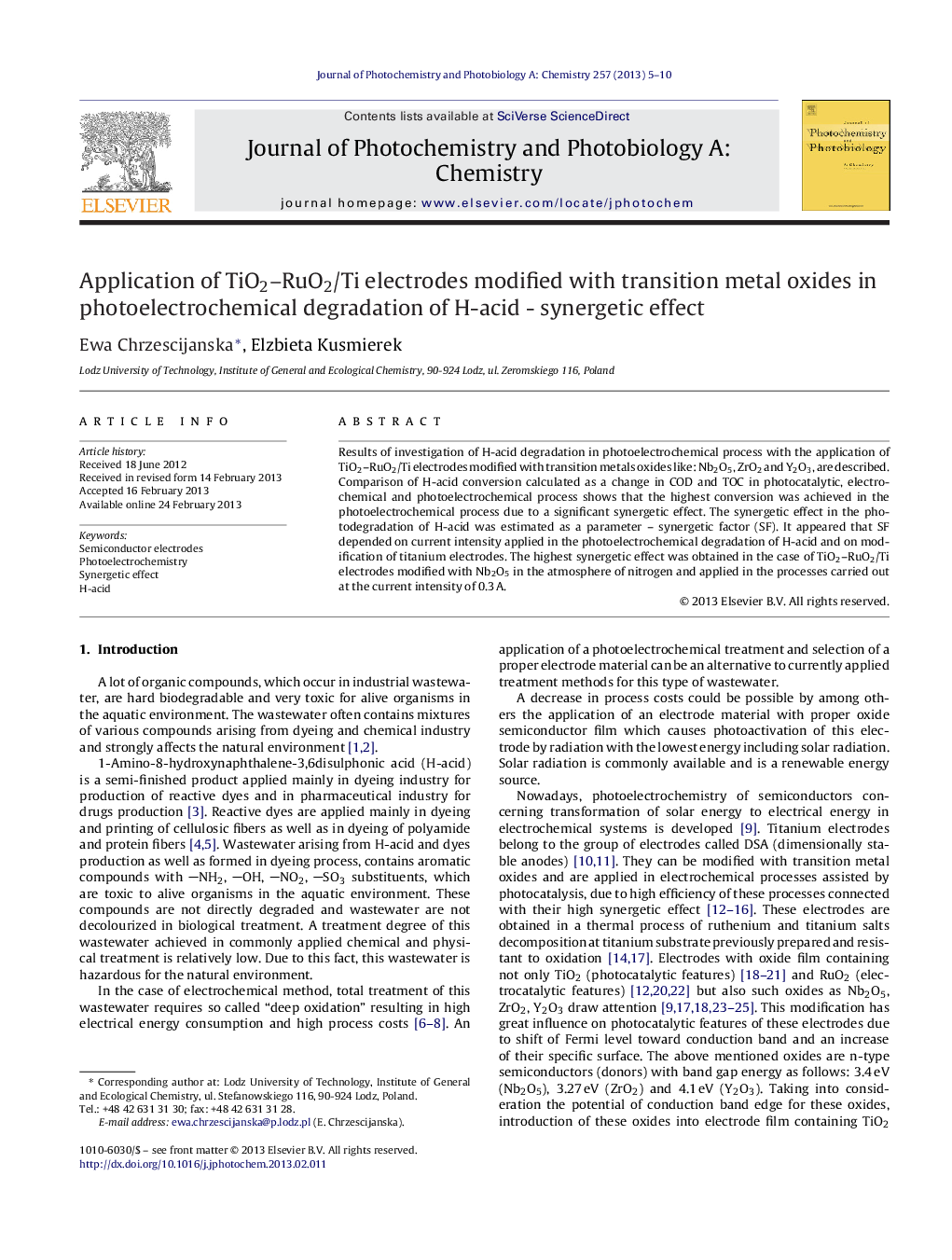| Article ID | Journal | Published Year | Pages | File Type |
|---|---|---|---|---|
| 27085 | Journal of Photochemistry and Photobiology A: Chemistry | 2013 | 6 Pages |
Results of investigation of H-acid degradation in photoelectrochemical process with the application of TiO2–RuO2/Ti electrodes modified with transition metals oxides like: Nb2O5, ZrO2 and Y2O3, are described. Comparison of H-acid conversion calculated as a change in COD and TOC in photocatalytic, electrochemical and photoelectrochemical process shows that the highest conversion was achieved in the photoelectrochemical process due to a significant synergetic effect. The synergetic effect in the photodegradation of H-acid was estimated as a parameter – synergetic factor (SF). It appeared that SF depended on current intensity applied in the photoelectrochemical degradation of H-acid and on modification of titanium electrodes. The highest synergetic effect was obtained in the case of TiO2–RuO2/Ti electrodes modified with Nb2O5 in the atmosphere of nitrogen and applied in the processes carried out at the current intensity of 0.3 A.
► Combination of electrochemical and photocatalytic in degradation of H-acid. ► Oxide film electrodes modified with Y2O3, Nb2O5 and ZrO2 show higher activity. ► Transition metal oxides as photocatalysts improving significantly synergetic effect.
